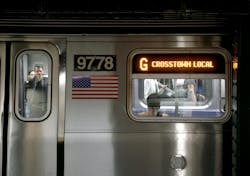MTA OIG audit finds subway passengers self-evacuating can be improved with better communication
An audit from the Office of the Metropolitan Transportation Authority (MTA) Inspector General (OIG) revealed subway passengers endanger themselves when they self-evacuate onto the tracks, and that this could be reduced with improved communication from train crews and better public messaging from New York City Transit (NYCT). The audit found that passengers were self-evacuating sometimes as soon as two minutes of delays.
The OIG audit found 46 instances of subway self-evacuations from 2015 to 2024—including during delays after a collision and derailment on the 1/2/3 line in Manhattan on Jan. 4, 2024. During that incident, some passengers on one of the derailed trains and two other trains that were stuck between stations chose to self-evacuate onto the tracks without any instructions from the crew or emergency responders to do so.
The audit found that during emergency incidents, crew members should make better announcements about the dangers of walking along the tracks and that passengers should remain on board for their safety and to prevent further service delays.
“It’s alarming that passengers are going onto the tracks, where they risk electrocution or getting hit by trains,” said MTA Inspector General Daniel G. Cort. “Evacuation between stations should be an absolute last resort and only after receiving instructions and guidance from New York City Transit personnel or first responders.”
OIG’s audit began following the Jan. 4 derailment. The purpose was to learn the extent of self-evacuations from subway trains and the adequacy of NYCT’s onboard emergency communications to passengers.
Among the findings:
- From 2015 to 2024, there were 46 self-evacuation incidents, with approximately one-third occurring on the 4/5/6 lines.
- Passengers risk electrocution or being struck by a moving train by going onto the railbed without instruction. Such action also leads to increased service delays, as NYCT personnel must ensure those passengers are no longer on the tracks.
- Passengers who self-evacuated often did so soon after the delay began. In 18 of the reviewed incidents, passengers self-evacuated within 30 minutes of the start of the delay. The shortest interval before self-evacuation was two minutes.
- Train crew members did not always remind passengers to remain on board during emergencies or warn passengers of the dangers of self-evacuating.
- Most NYCT train personnel with whom OIG spoke to were not aware of the requirement that during emergencies a train operator must make passenger announcements when the conductor is unavailable to do so.
OIG made six recommendations to NYCT to help reduce self-evacuations and improve communications with customers. They include how NYCT should make better use of its incident data to monitor self-evacuation patterns and increase efforts to educate the riding public about the dangers of exiting a train onto the railbed. NYCT accepted four of the recommendations and is reviewing the other two.
